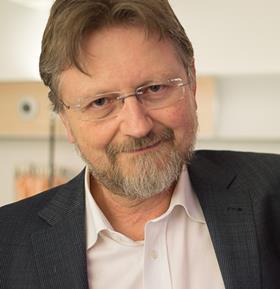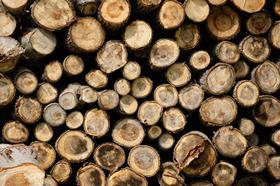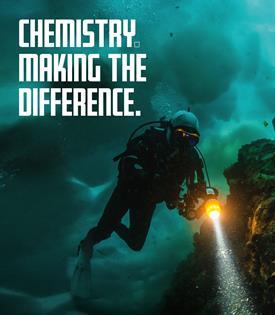Professor Sixta converts cellulose, a renewable resource found in wood or plants, into everyday essentials like textile fibres for clothes. His work helps to make the fashion industry more sustainable
What is a professor of biorefineries?
I lead a team of researchers to refine biomass which means I convert organic, sustainable materials like wood into products, like clothing. Together with my team, I invented the Ioncell technology that turns used textiles, pulp and old newspapers into new textile fibres sustainably.

I continue to explore sustainable ways to convert biomass so that it can be used to make other products like films for packaging and parts of batteries.
Biomass is plant or animal material; examples include wood, crops, seaweed and animal waste. A biorefinery converts biomass to energy and other beneficial byproducts. Professor Sixta refines biomass sustainably.
How did you get into your job?
I’ve been interested in chemistry since I started school. Although I came from a medical family and was initially planning on studying medicine, I decided to follow my interest by choosing chemistry and actually did a PhD in physical chemistry. After I finished my PhD, I worked in a textile company as a research chemist, then as a research manager within the same company specialsing in cellulose chemistry creating cellulose-based products.
After 25 years at that company I was head-hunted by a university in Finland because of my background in cellulose chemistry. Cellulose is found in wood and the Finnish government were funding universities to come up with new ideas for products derived from wood. Textiles seemed a possible option and I helped them to explore how we could do this sustainably.
What is your typical day like?
I spend about 50% of my time with my students discussing their ongoing projects and helping them prepare their publications and graduate successfully. During the rest of the day, I study scientific journals to understand what other researchers are working on to help inform the work we are doing. I also prepare papers and presentations to tell other scientists about my research and how it is progressing.
What do you enjoy most about your job?
Collaborating with researchers all over the world from different disciplines and the satisfaction of my students successfully graduating and getting their research published in journals. I love the relatively high level of freedom I have and being able to organise my own work every day.

Aalto University is a multidisciplinary University which has led to innovative ideas. The design and science students worked together to create a unique fashion show by replicating the whole supply chain from making the thread to showcasing the collection! The science department made the yarn by converting the wood to pulp, extracting the cellulose, converting the pulp of the cellulose into textile fibres, and processing the textile fibres into yarn. The design students created their collection by sewing or weaving the yarn into clothes and staging the fashion show. Together the fashion show won the global change award from H&M.
Salary range and qualifications required
Minimum qualification for role: A PhD in chemistry or a related study.
Starting salary band: A PhD student who is employed in our university typically earns up to £34,400
How is your job helping to fix the future?
I use green chemistry methods to produce textile fibres sustainably. I do this by using readily available, renewable, plant-based resources instead of non-renewable resources like crude oil, which take millions of years to form. In addition, I take care of the environment by ensuring that the chemicals I use in the production process are environmentally friendly and recyclable.
My ground-breaking way of producing textile fibres also tackles climate change by cutting down carbon dioxide emissions and providing a greener production route for the fashion industry. This is really important as, according to the United Nations, the fashion industry is “widely believed to be the second-most polluting industry in the world”. The industry is responsible for about 8% of the total carbon emissions worldwide. It accounts for more than 20% of wastewater globally, the UN says. About 93bn cubic metres of water - enough for five million people to survive - is used by the fashion industry every year.
In addition I am looking to convert biomass components into the raw materials for other products.
What skills do you need?
A broad, basic knowledge in chemistry is very helpful. In addition to this, teamwork and good communication skills are very important for successful project work, including the ability to draw on a network for support.
What advice would you have for a young person wishing to enter your career area?
For everybody who is interested in confronting climate change, I think it’s important to have a good foundation in one of these disciplines: biochemistry, biology, biotechnology, chemistry or chemical engineering. In my opinion, the important thing is that you are dedicated, interested in your field and do well in your studies.
What are your plans for the future?
At the moment, my greatest interest is to contribute towards net zero carbon production of textile fibres – that’s the privilege of working in this area for many years. I’m very grateful to be able to contribute towards this vital change.
Want to find out more?
- Talk to your career adviser about getting somework experience.
- Browse Ioncell’s site for more information about sustainable textile production.
- Read this article to find out more about the role of biomass as a fuel and Dr Sixta’s work.
First published August 2021













